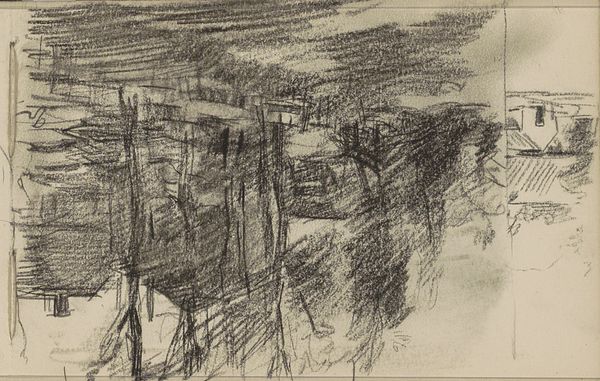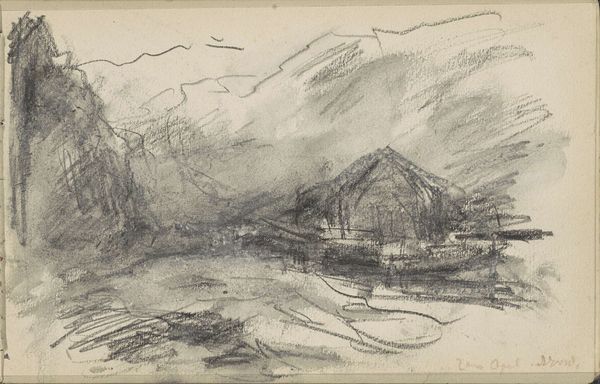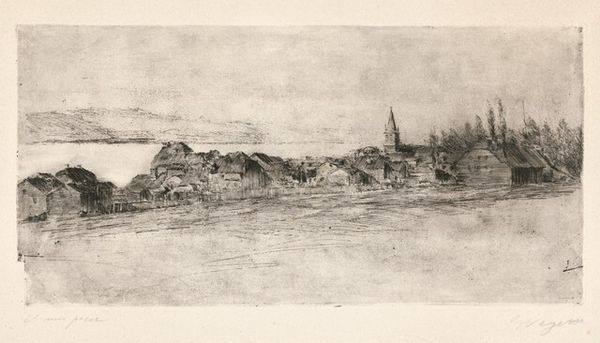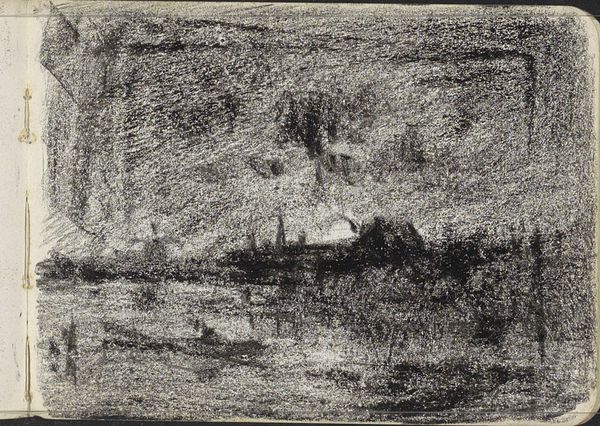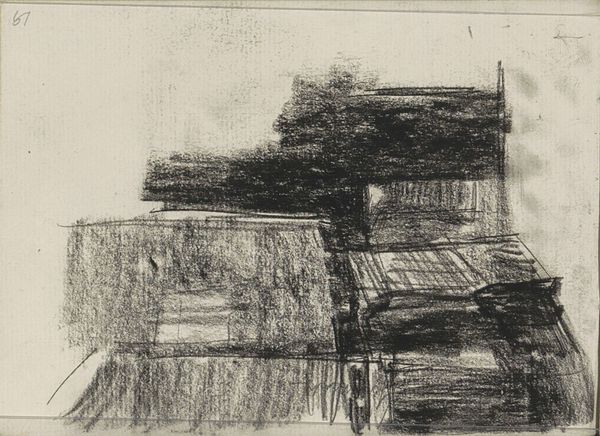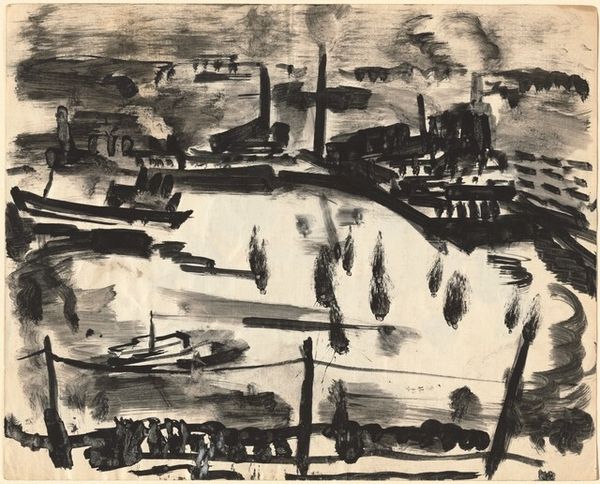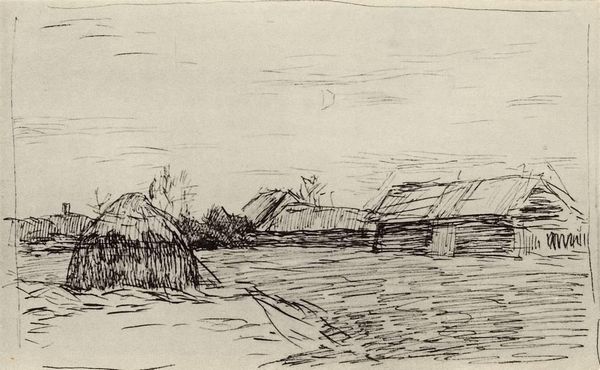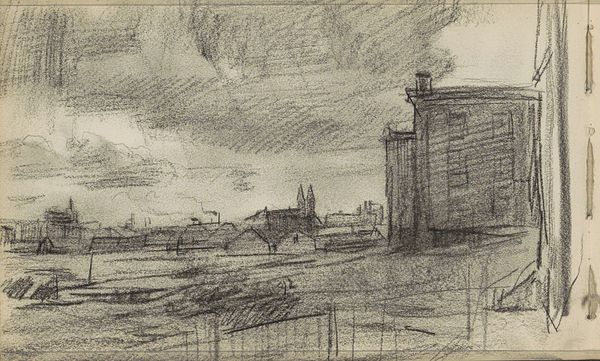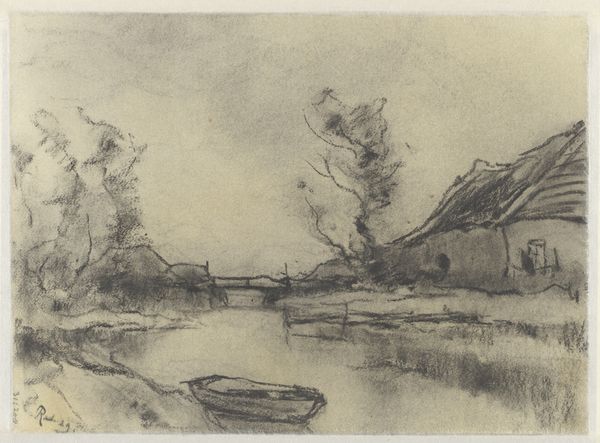
Dimensions: actual: 17.6 x 27.4 cm (6 15/16 x 10 13/16 in.)
Copyright: CC0 1.0
Curator: This is William Morris’s Landscape with River, held here at the Harvard Art Museums. Editor: It feels like a fleeting glimpse, a memory half-formed. The soft graphite gives it a hazy, dreamlike quality. Curator: Indeed, the lack of hard lines emphasizes transience, reflecting perhaps Morris's yearning for a pre-industrial, more organic world. Notice how the reflections in the water mirror the buildings and trees, almost dissolving the boundary between reality and perception. Editor: It's interesting to consider this alongside Morris's socialist views. The muted tones could reflect the suppression of the working class within the landscape, their lack of visibility or agency in a rapidly changing society. Curator: That's a powerful reading. The river, a traditional symbol of flow and change, might then also represent the relentless march of industrial progress that Morris so resisted. Editor: The mirroring effect—is it a symbol for the wealthy literally ‘reflecting’ the working classes as they exploit them? Interesting to think about. Curator: Art invites interpretation, doesn't it? Morris's landscape offers a space to reflect on our own relationship to nature and societal change. Editor: Absolutely. It's a testament to the enduring power of visual language and the complex social and political dynamics it reflects.
Comments
No comments
Be the first to comment and join the conversation on the ultimate creative platform.
